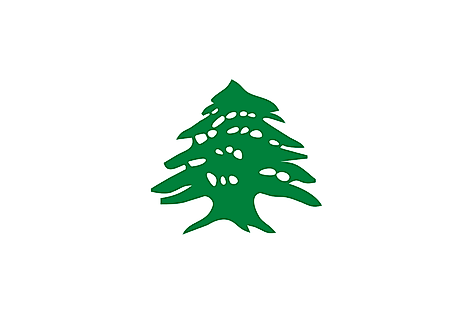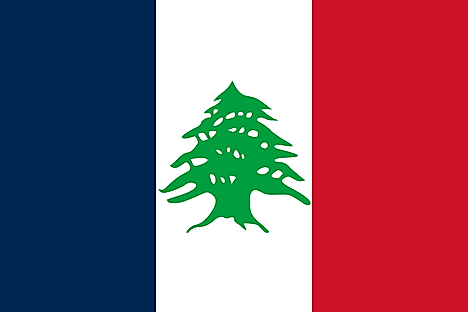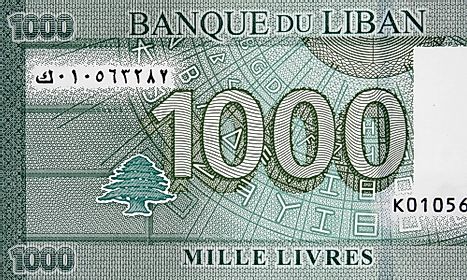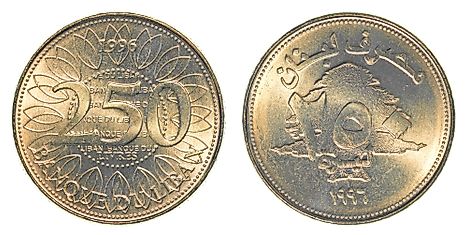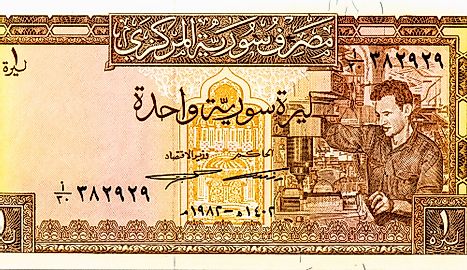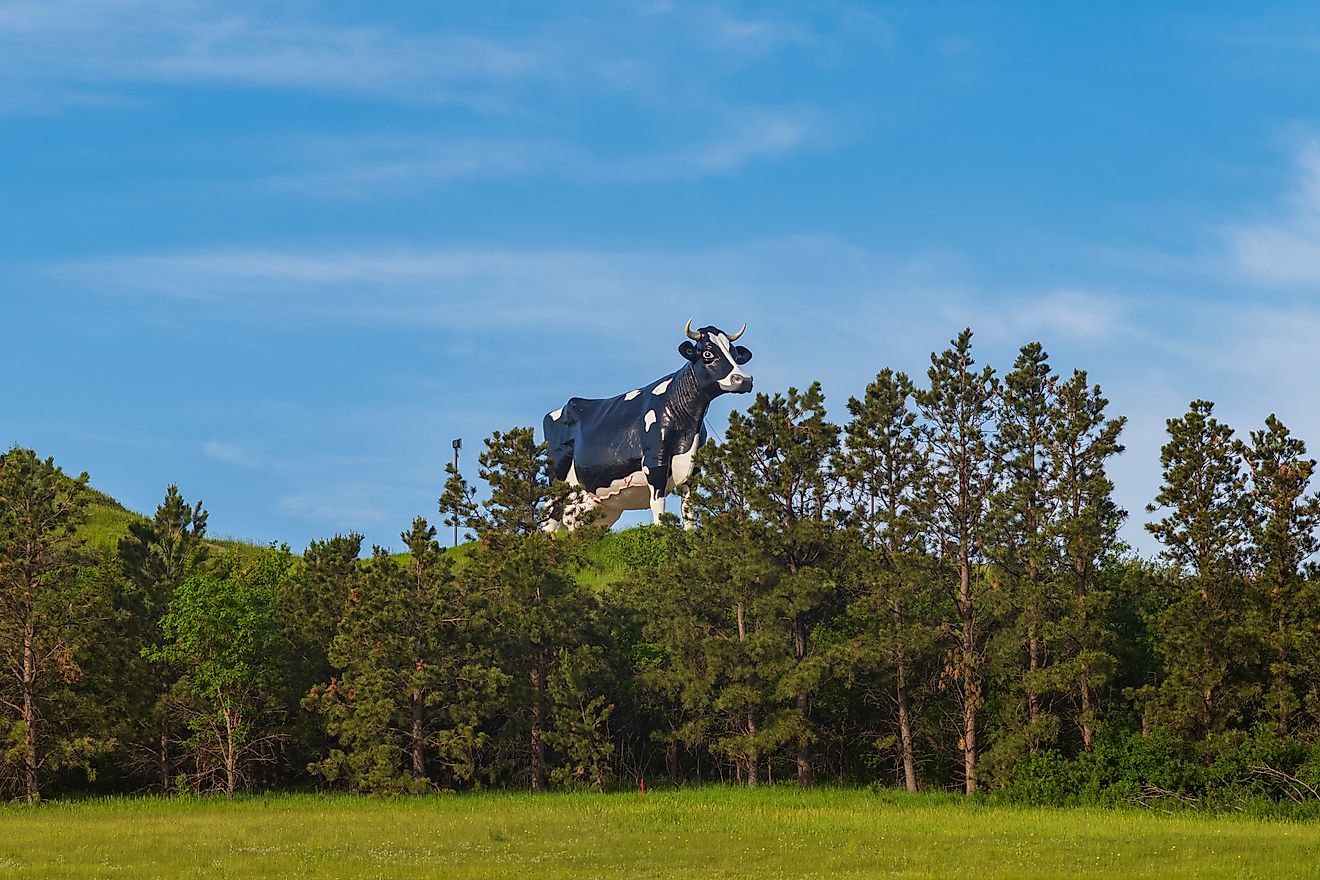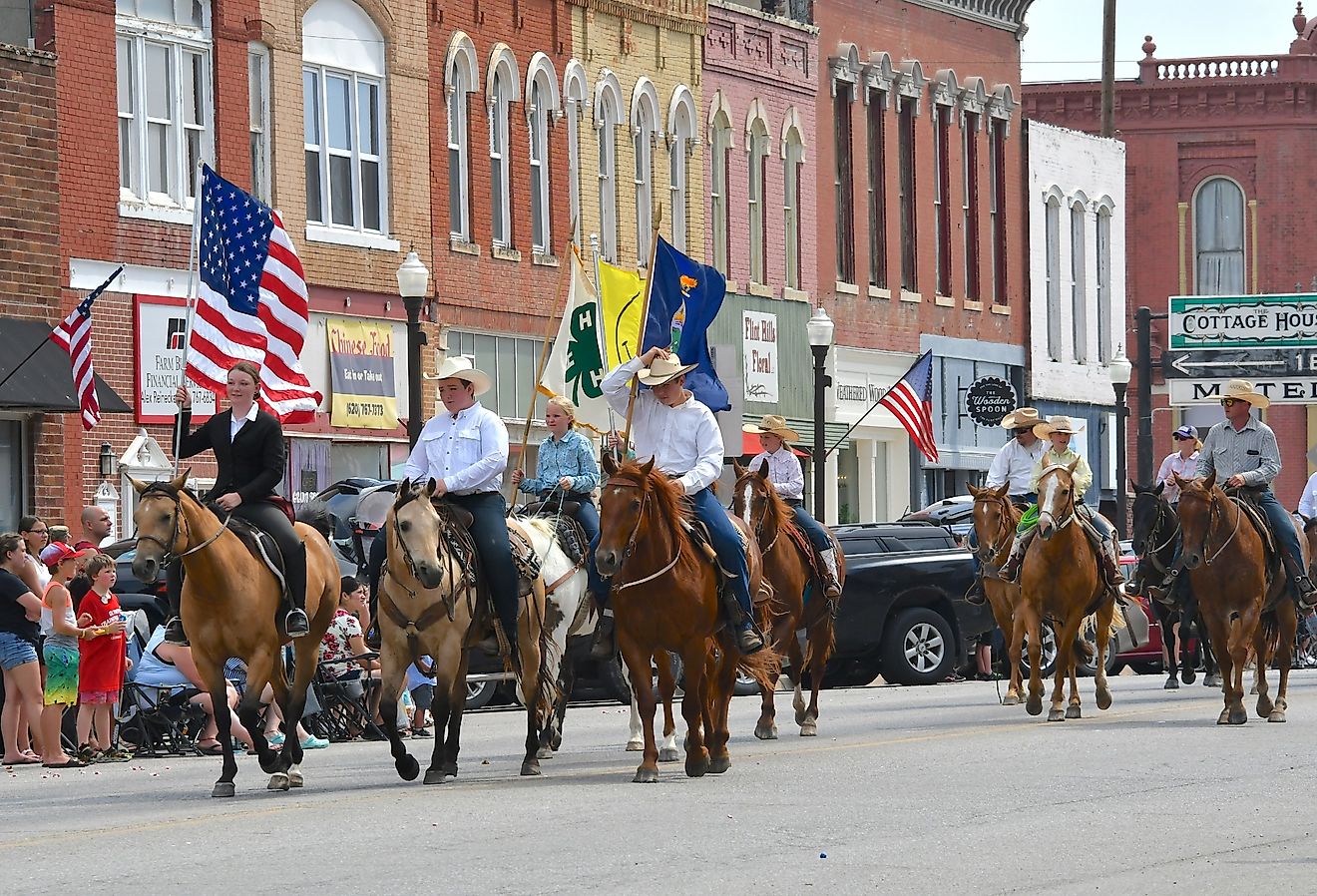Flags, Symbols, & Currencies of Lebanon
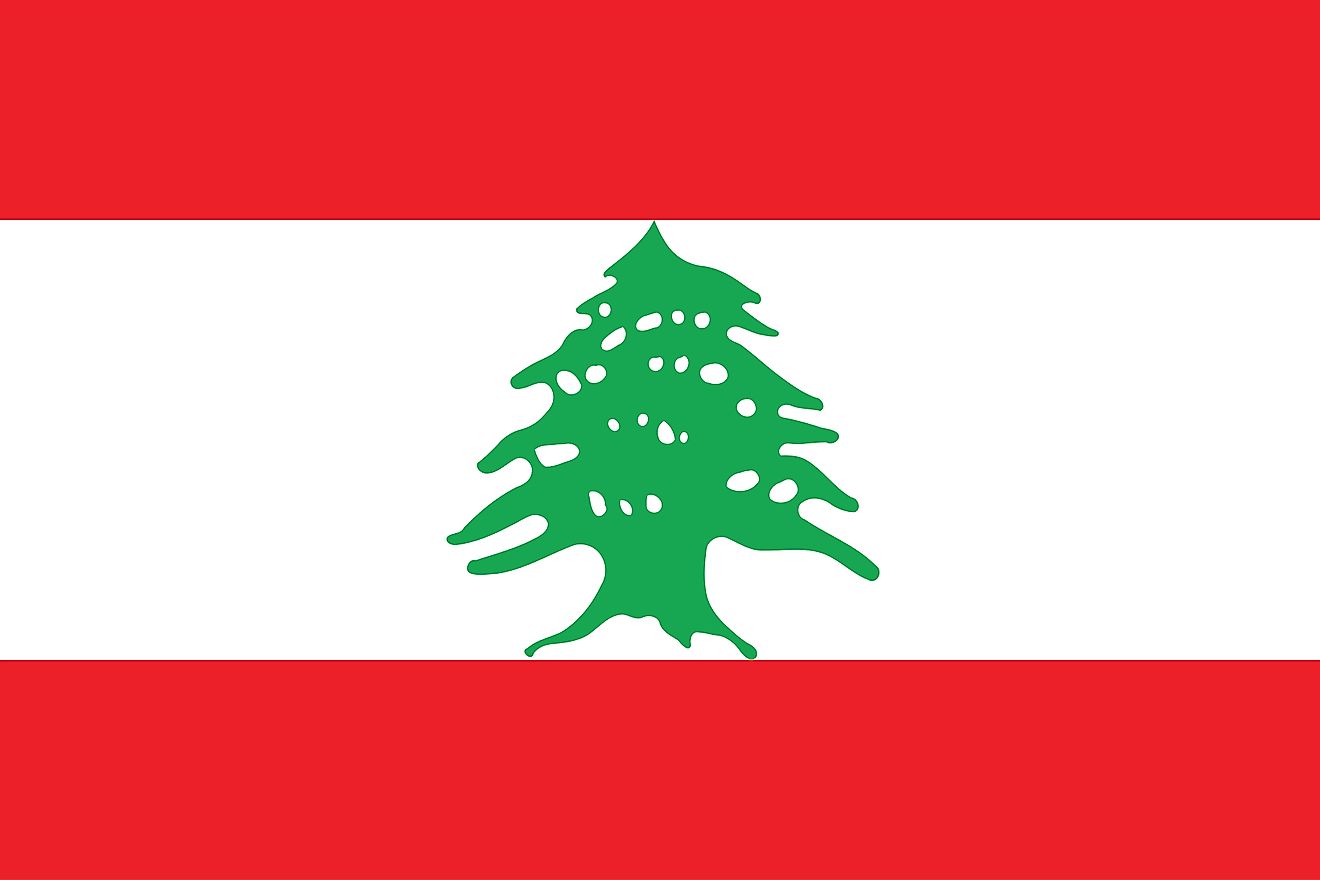
The national flag of Lebanon was adopted on December 7, 1943. Lebanon’s flag is rectangular in shape and contains three horizontal stripes. The upper and the lower stripes are red in color, while the middle stripe is white. The width of the stripes have a ratio of 1:2:1. Thus, the white stripe is twice as thick as the red stripes. The white stripe features the Lebanon cedar, or green cedar, in the center. The cedar touches the inner edges of both the upper and the lower red stripes.
The flag's red colored stripes serve as a reminder of the blood shed by the people of Lebanon to protect their country against invading foreign powers. The white color symbolises peace and purity, as well as snow. The Lebanon cedar featured in the center of the flag has significant meaning, as it is referenced in various biblical passages, and is believed to epitomize peace, eternity, and holiness. The cedar grows in Lebanon's mountains and is a central feature on the flag.
History of Lebanon's Flag
Lebanon has had several flags throughout its history, which were typically dependent on the ruling power at a given time. During the French Mandate of Lebanon, a flag somewhat similar to the current Lebanese flag was used. However, the stripes were vertical instead of horizontal, and were blue, white, and red, arranged from the hoist side of the flag to the fly side. A cedar tree was also featured at the center of the flag, but it had a brown trunk instead of the green cedar in the current flag. This flag was in use from 1920 to 1943, and the current flag was first adopted on December 7, 1943 when the country gained independence from France.
Symbols of Lebanon
National Coat of Arms of Lebanon
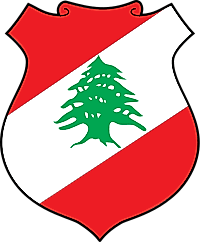
Lebanon do not have an official coat of arms since the current emplem has never been officially adopted. Lebanon's coat of arms is composed of a shield depicting the national flag. However, the white field in the shield runs diagonally instead of horizontally.
National Anthem
- Anthem Title: an-Našīd al-Waṭanī al-Lubnānī (National Anthem of Lebanon)
- Music composer: Wadia Sabra
- Lyricist: Rasid Naxia
- Date of Adoption: July 12, 1927
an-Našīd al-Waṭanī al-Lubnānī (National Anthem of Lebanon) was written by Rasid Naxia and set to music by Wadia Sabra in 1925. It was selected from several proposals submitted during a national competition to choose the national anthem. The anthem was influenced by Beirut's exposure to western culture. The national anthem was adopted on July 12, 1927, seven years after the Greater Lebanon's state proclamation.
النشيد الوطني اللبناني/an-Našīd al-Waṭanī al-Lubnānī (Arabic)
كلنا للوطن للعلى للعلم
ملء عين الزّمن سيفنا والقلم
سهلنا والجبل منبت للرجال
قولنا والعمل في سبيل الكمال
كلنا للوطن للعلى للعلم
كلّنا للوطن
شيخنا والفتى عند صوت الوطن
أسد غاب متى ساورتنا الفتن
شرقنا قلبه أبداً لبنان
صانه ربه لمدى الأزمان
كلنا للوطن للعلى للعلم
كلنا للوطن
بحره برّه درّة الشرقين
رِفدُه برّهُ مالئ القطبين
إسمه عزّه منذ كان الجدود
مجدُهُ أرزُهُ رمزُهُ للخلود
كلّنا للوطن للعلى للعلم
لّنا للوطنك
National Anthem of Lebanon
All of us! For our Country, for our Glory and Flag!
Our valor and our writings are the envy of the ages.
Our mountain and our valley, they bring forth stalwart men.
And to Perfection we devote our words and labor.
All of us! For our Country, for our Glory and Flag!
All of us! For our Country!
Our Elders and our children, they await our Country's call,
And on the Day of Crisis they are as Lions of the Jungle.
The heart of our East is ever Lebanon,
God has preserved her until the end of time.
All of us! For our Country, for our Glory and Flag!
All of us! For our Country!
The Gems of the East are her land and sea.
Throughout the world her good deeds flow from pole to pole.
And her name is her glory since time began.
The cedars are her pride, her immortality's symbol.
All of us! For our Country, for our Glory and Flag!
All of us! For our Country!
The Currency of Lebanon is the Lebanese pound
The official currency of Lebanon is the Lebanese pound. The pound was divided into 100 piastres, but high inflation in the country has eliminated this subdivision. Due to the French occupation of Lebanon, Lebanese coins and bank notes are bilingual in Arabic and French. Banque du Liban has played a critical role in the development of the currency in Lebanon. Its mission is to issue money, ensure transferability, protect its value, and supervise the banking institutions in the country.
Lebanese Coins
The first Lebanese coins were issued in 1924 in denominations of 2 and 5 girush, while the French denominations were issued in Syrian piastres. During World War I, the coins issued did not include the word “syriennes” and were in the denominations ranging from ½ to 50 girsha. After the war, the Arabic spelling for “girsha” changed to “qirsh.” Between 1952 and 1986, coins were issued in denominations of qirsh and lira. Banque du Liban did not issue any coin between 1986 and 1994. The current series of coins were introduced in 1994 and come in denominations of 50, 100, 250, and 500.
Lebanese Banknotes
The first banknotes were issued by the Bank of Syria and Greater Lebanon in 1925. These banknotes ranged from 25 girsha to 100 pounds in denominations. The bank changed its name to Bank of Syria and Lebanon in 1939. The first 250-notes also appeared in the same year. Small change paper money was issued by the BSL between 1942 and 1950 in denominations ranging from 5 to 50 girsha. After 1945, paper money was denominated specifically in Lebanese pounds to distinguish them from the Syrian banknotes. On August 1, 1963, the Bank of Lebanon was granted the sole mandate to print banknotes in the denominations ranging from 1 to 250 pounds. The current banknotes feature Arabic and French script numerals, each on either side with serial numbers in both Arabic and Latin. A bar code is placed below the serial numbers.
Historical Currencies of Lebanon
Before the World War I, Lebanon was part of the Ottoman Empire and therefore the Ottoman lira was the legal tender. Following the fall of the Ottoman Empire in 1918, the Ottoman lira was replaced by the Egyptian pound, which was issued by a private British institution in states under the joint British and French mandate. When Lebanon was taken under French mandate, the French sought to replace the Egyptian pound and granted Banque du Syrie, an affiliate of the French Ottoman Bank, the authority to issue the Syrian pound. The Syrian pound was pegged to the French franc at an exchange rate of one pound to 20 francs. In 1924, Bank Syria and Lebanon (BSL) was granted the right to issue franc-based Lebanese-Syrian currency. Lebanese currency was officially separated from Syrian currency, but could be used interchangeably. The Lebanese currency remained linked to the French franc until 1941, when it became linked to the British pound. Currently, the Lebanese pound is the legal tender in Lebanon.
